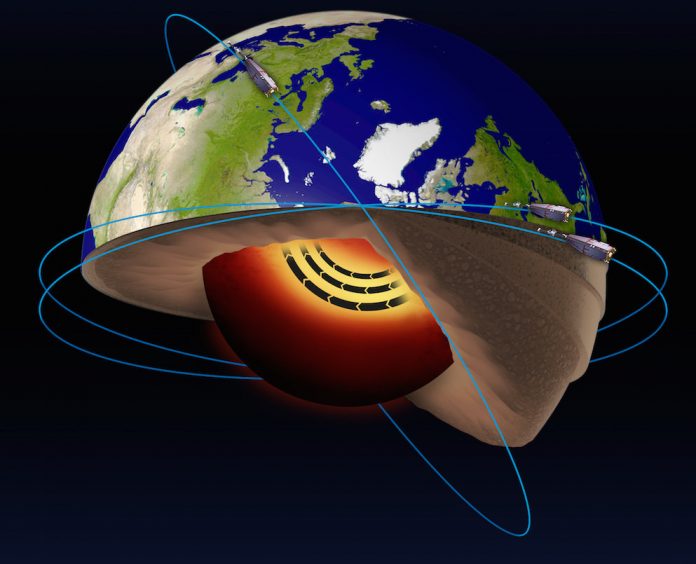A jet stream within the molten iron core of our planet Earth has been detected by the scientists. Latest satellite data was used for the discovery as it helped create an X-ray view of the Earth.
A paper, published in the journal Nature Geoscience, explains that the field exists because of an “ocean of superheated, swirling liquid iron” that makes up the outer core. This works in a similar way to a spinning conductor in a bike dynamo; this moving iron creates electrical currents, which in turn generate the planet’s magnetic field.
The discovery was made by Phil Livermore and his colleagues at the University of Leeds, as well as researchers from the Technical University of Denmark, using Esa’s Swarm satellites. Launched in 2013, the trio of satellites is used to measure the different magnetic fields that stem from Earth’s core, mantle, crust, oceans, ionosphere and magnetosphere.
Collectively, the signals form the magnetic field that shields Earth from cosmic radiation and stops charged particles plummeting into Earth during solar winds. This is one of the ways scientists can look inside the planet. “We know more about the Sun than Earth’s core because the Sun is not hidden from us by 3000 km of rock,” said Chris Finlay from the Technical University of Denmark.
Tracking changes in the magnetic field can tell researchers how the iron in the core moves. The accurate measurements by Swarm satellites allow the different sources of magnetism to be studied, making the contribution from the core much clearer.
One feature is a pattern of ‘flux patches’ in the Northern Hemisphere, mostly under Alaska and Siberia, described as the Earth’s “stormy heart.” The jet flows along a boundary between two different parts of the core. When material in the liquid core moves towards this boundary from both sides, the liquid is squeezed out sideways, forming the jet.
“Of course, you need a force to move the fluid towards the boundary,” said Professor Rainer Hollerbach, from the University of Leeds. “This could be provided by buoyancy, or perhaps more likely from changes in the magnetic field within the core.”
“These high-latitude flux patches are like bright spots in the magnetic field and they make it easy to see changes in the field,” explained Dr Livermore.
Swarm reveals these changes are actually a jet stream moving at more than 40km a year – three times faster than typical outer-core speeds and hundreds of thousands of times faster than Earth’s tectonic plates move.
“We can explain it as acceleration in a band of core fluid circling the pole, like the jet stream in the atmosphere,” said Dr Livermore.















